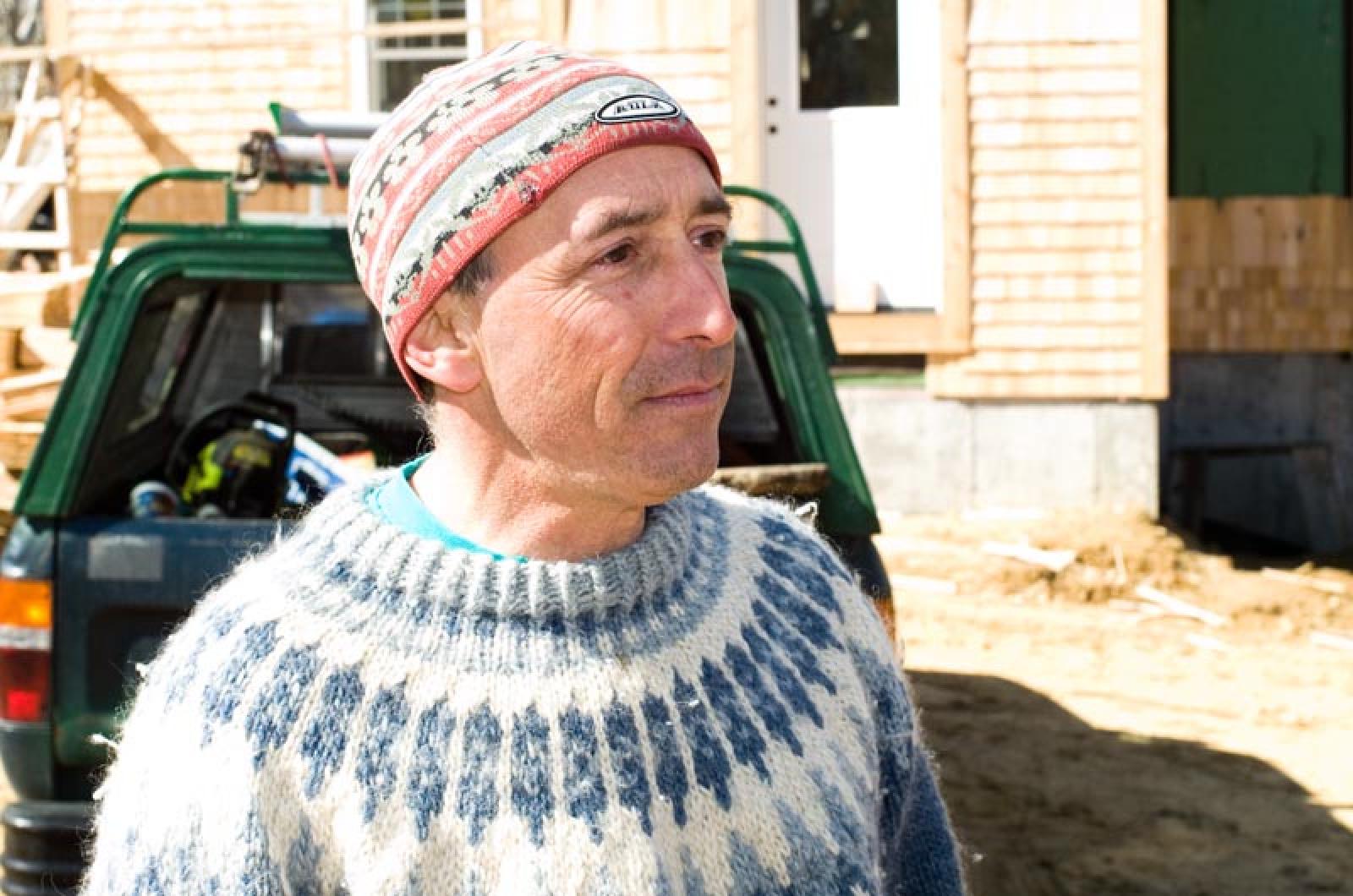Jim Feiner is not your average affordable housing guy.
He has no public funding, no board of directors and certainly no trust fund.
But he has an idea.
“One of the things that is an endangered species on Martha’s Vineyard is a neighborhood,” the Chilmark real estate agent said in a recent interview, standing on a piece of property he owns on the Dr. Fisher Road not far from the West Tisbury School. Mr. Feiner believes the property has the makings of a neighborhood. Since 2005, he has been developing three homes here, two of which are restricted to affordable housing and one that will be sold at market rate. The affordable homes are nearing completion, with new owners expected to take occupancy in June. “Part of my infatuation with this project was I was thinking about families walking on the path to the school,” he said. The cluster of homes is a first in West Tisbury. Mr. Feiner took advantage of a zoning bylaw that allows density to exceed minimum zoning, by special permit, if affordable homesites are involved. Mr. Feiner’s property is 3.1 acres, but two of the three acres were voluntarily conserved to protect a frost bottom and rare moth habitat. The project is being privately funded by Mr. Feiner, with help from low-interest loans.
The business plan calls for the sale of the market rate house to cover the construction cost on the two affordable homes. The two affordable homes are being sold for $350,000, and already have buyers. They are Owen and Erica Maloney and Patti Roads. Because the project is privately funded by Mr. Feiner, the homes did not have to go out to bid. A lifelong Islander, Mr. Feiner found the new homeowners by word of mouth.
Mr. Feiner has worn many hats — he works as a real estate agent and has been a member of the Chilmark housing committee, but he never saw himself as a developer.
“Not really how I envision myself,” he said. “But to get this done, I’ll wear that hat for now.”
The project has proceeded in fits and starts, but began as a “hare-brained idea that in West Tisbury there was this really cool bylaw that no other towns had that I was aware of,” Mr. Feiner said. “So I found the cheapest lot on the market and talked to my friend Niki Patton, who really needed a house at the time.” Mr. Feiner and Ms. Patton bought the land for $485,000.
“She was at the point where . . . she couldn’t qualify for affordable housing but also couldn’t afford a market-rate house,” he said. “We looked at the bylaw with the idea of getting her a house and creating two homesites for other people.” Mr. Feiner never intended to build the homes himself, but with a sinking economy and increased construction costs, no one was interested in the homesites. “Suddenly we were out of luck . . . we got stuck in this ebbing and flowing of the economy,” he said. “The markets would go up and the markets would go down, material costs would go up and down.” Enter builder Farley Pedler. Mr. Feiner had been in talks with a handful of builders, but Mr. Pedler “was the first person who really wanted to make this happen.” Meanwhile, Ms. Patton found another housing arrangement and Mr. Pedler and Mr. Feiner continued on with the project.
Once sale of all three houses is complete, the intention is to transfer the underlying land to Island Housing Trust, which would make sure restrictions under the bylaw are met, according to Mr. Feiner and Philippe Jordi, executive director of the affordable housing group.
The two affordable homes are on track for completion, although customized additions proved to be a challenge.
“We encouraged people to modify their houses . . . but the drawback was it made the process more complicated and pricey,” he said.
“At the end of the day we’re going to lose money, hopefully the market house sells high enough so we don’t lose a lot of money,” he said. “But these are going to some really good people in the community.”







Comments
Comment policy »